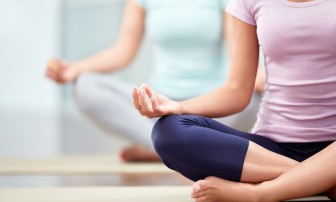Body image refers to how people see themselves. Distorted body image (also called negative body image) refers to an unrealistic view of how someone sees their body. Like eating disorders, it is seen most commonly in women, but many men also suffer from the disorder.
You begin forming your perceptions of your body’s attractiveness, health, acceptability, and functionality in early childhood. This body image continues to form as you age and receive feedback from peers, family member, coaches, etc.
Personality traits such as perfectionism and self-criticism can also influence the velopment of a negative internalised image of your body.
Symptoms of unhealthy or negative body image may include:
- obsessive self scrutiny in mirrors
- thinking disparaging comments about your body and frequent comparison of your own shape and size to other people
- envy or a friend’s body, or just as commonly: the body of a celebrity or someone else in the media.
Causes of Negative Body Image
Sometimes body image is negatively impacted by one or more significant events. For example, a gymnast who is continually chided by her coach and fellow athletes to lose a little weight, may develop a deeply ingrained and long standing dissatisfaction with her body, no matter how thin she becomes.
If you are concerned about your body image, here are some questions to ask yourself:
- Is my perception of beauty distorted from years of media exposure that glorifies a very thin ideal that is unrealistic for most people to obtain in a health manner?
- Do I find myself regularly criticising my own appearance?
Relationship Between Weight & Body Image
A normally healthy weight range for an individual can be perceived as overweight by someone with a distorted body image. An anorexic young woman may look at herself in a mirror and see a reflection that is greater than her actual size.
Conversely, it is not uncommon for obese individuals to report that they did not realize they were as large as they are and had perceived their body as much smaller until an occasion arises where they see a photograph, video or window reflection that strikes a nerve and causes them to come to terms with their actual image.
Relationship Between An Eating Disorder & Body Image
Body image concerns and eating disorders go hand in hand. Often, it is the early dissatisfaction with a young person’s appearance that leads them to conclude that losing weight would enhance their appearance, and make them feel better about themselves and their bodies.
Thus, restrictive eating and over exercising are often next, frequently leading to patterns of disordered eating and weight obsession that can develop into anorexia, bulimia, orthorexia, compulsive overeating or binge eating disorder.
Treatment For Negative Body Image
Getting treatment for distorted body image is a critical step to recovery. The problem won’t just go away by itself.
Recognising and acknowledging your feelings and accompanying body sensations will help you become more comfortable in your body and lessens the tendency to suppress feelings and revert to unhealthy, negative inner diatribes to escape uncomfortable feelings.
Established in 2010, our Residential facility at Lois Bridges is a beautifully restored Georgian house set in its own grounds, located by the sea with wonderful scenic walks and close to all amenities. Our daypatient and outpatient facility is also based at Lois Bridges and is set amongst beautiful gardens providing a peaceful setting for the journey to recovery. We offer comprehensive and flexible treatment programs for males and females over the age of 18 who are suffering from Eating Disorders such as anorexia, bulimia, binge eating and all forms of disordered eating including AFRID (Avoidant/Restrictive Food Intake Disorder).
Whether you are a client, family member or professional – do not hesitate to contact Lois Bridges


